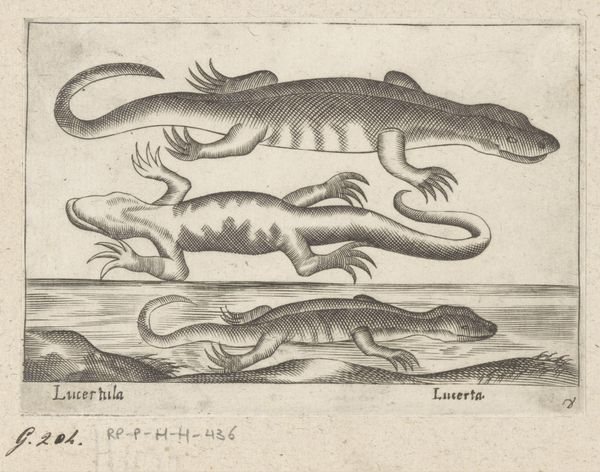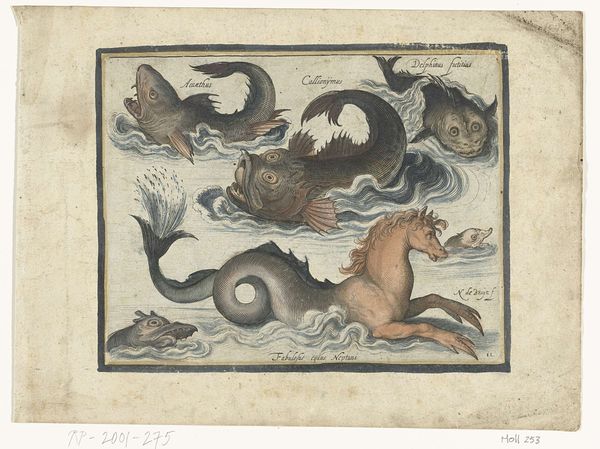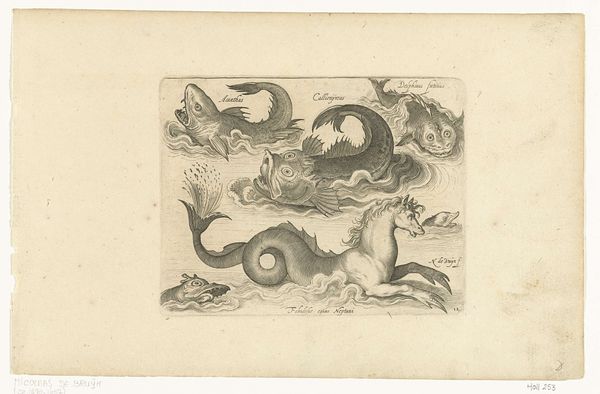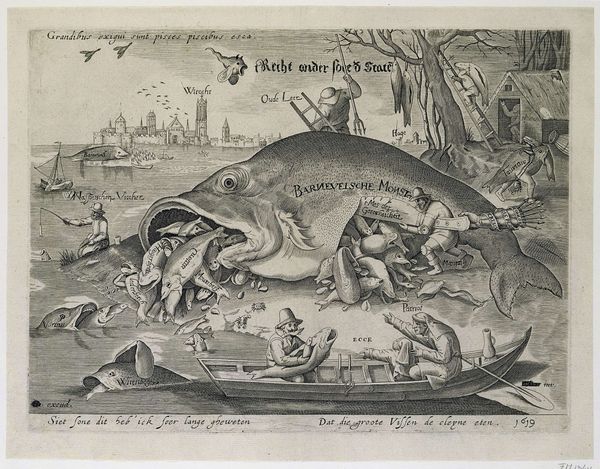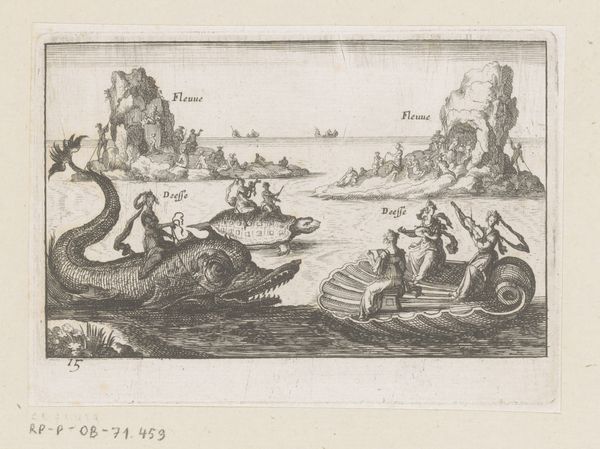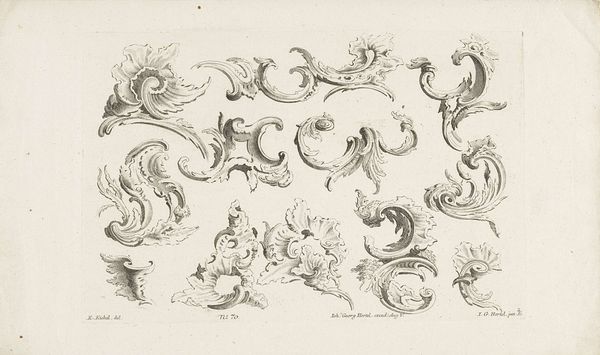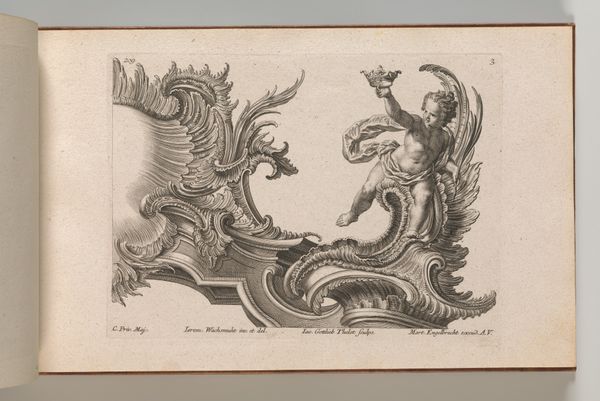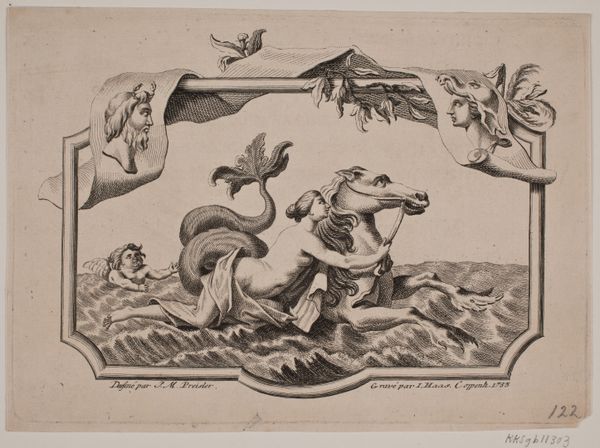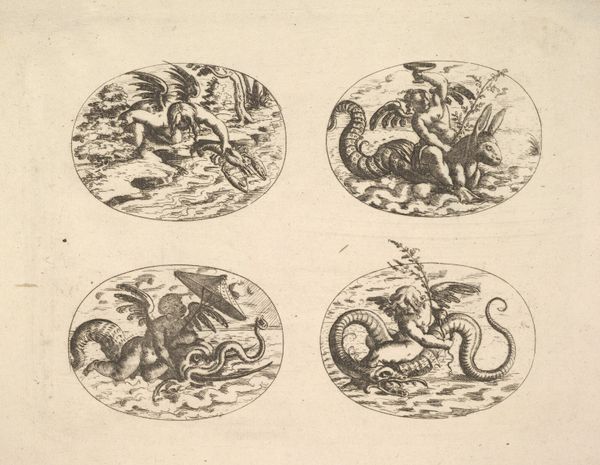
print, engraving
#
allegory
# print
#
pen illustration
#
fantasy-art
#
figuration
#
11_renaissance
#
geometric
#
line
#
northern-renaissance
#
engraving
Dimensions: height 135 mm, width 185 mm
Copyright: Rijks Museum: Open Domain
Curator: So, here we have an engraving, attributed to an anonymous artist, but created sometime between 1581 and 1652, called "Fantastic Water Animals, Including a Seahorse". It's currently held in the Rijksmuseum. Editor: It's… whimsical, to say the least. A bestiary of bizarre, almost comical sea creatures. They're wonderfully unsettling. Curator: Indeed! It’s fascinating how the artist blends observation and pure invention. Consider the linear detail, almost scientific in its precision, yet the creatures themselves are anything but scientifically accurate. The hatching creates such volume. Editor: I am really interested in the material processes here. An engraving of such intricate detail suggests access to resources, time, skilled labor. But it's purpose isn’t self-evident. Was this just an aesthetic exercise or didactic work related to the era's fascination with the natural world? The print medium suggests a potential reach to a larger public. Curator: That's precisely it. Was it purely decorative? I like to think of the artisan at their work station pondering this, imagining fantastical forms, and engraving them so diligently in these stark and dramatic shapes. What tales inspired him I wonder... This animal right here in the middle, 'Callionymus', it resembles a frowning bishop of sorts! Editor: Yes, even with my lack of expertise of such prints and this era in general I could spot allegory being at play! A sea horse blended into Neptunus mythical horses and these animals named after different types of leaves and plants - it screams "the symbolic language of nature and power" which would resonate within elite circles during that time. The choice of sea creatures reflects the era’s fascination with exploring unknown worlds, both terrestrial and aquatic. The artist isn’t merely depicting animals. Curator: The piece leaves you questioning our relationship with the natural world, doesn't it? Are we meant to dominate and classify, or to wonder at its boundless capacity to surprise and confound us? Editor: Exactly. The means of production were definitely designed to highlight nature's wonders, prompting both appreciation and, perhaps, exploitation by those who could own it. This work then, captures this complicated entanglement in aesthetics of the time. Curator: It’s strange, thinking how contemporary eyes approach such an artefact with contemporary eyes that now focus so much on material extraction, yet they would struggle with decoding that so elegantly represented in the print.
Comments
No comments
Be the first to comment and join the conversation on the ultimate creative platform.


